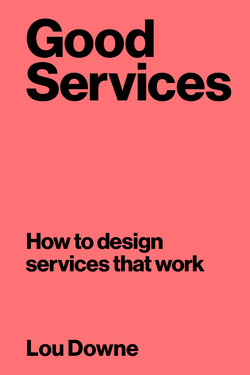Читать книгу Good Services - Lou Downe - Страница 32
На сайте Литреса книга снята с продажи.
ОглавлениеNaming your service
Rather than using the words your organisation uses to describe the tasks it has completed, try to find out some of the words your user would use to describe what they’re trying to achieve. What names work for users will depend on two things:
1What your user wants to achieve
2How knowledgeable they are about what services might be available to help them achieve their end goal
For example, someone moving house might not think that the service ‘move house’ exists, based on their previous experiences, but instead might think to look for ‘removal companies’ or ‘estate agents’.
In areas where a service is less ubiquitous than moving house – for example, registering a trademark – a user’s knowledge of what they might be able to get help with might be so low that they may try to find the noun they think most applies to them and hope for the best. This obviously means they may end up using a service that isn’t applicable to them. Your job is to understand how that overall task breaks down into smaller tasks a user identifies as something they need help with.
It might help to think about the name of your service existing somewhere on a spectrum between verb and noun, where the thing users think to look for will inevitably be somewhere in the middle. Most importantly, base your name on a solid understanding of the words your users use.
1Avoid legal or technical language For example, rather than ‘fee remission’ use ‘help with payment’.
2Describe a task, not a technology Avoid words that describe a technology or an approach to technology that your service uses, such as ‘portal’, ‘hub’ ‘e-something’ or ‘i-something’. Your approach to technology is rarely of interest to your user, and words like these only serve to date your service to a particular era of technology.
3Don’t use acronyms Acronyms might make it easier for you to refer to your service, but they are the most impenetrable language for your user to decipher.
When searching for a service, what users look for is somewhere on a spectrum between what your organisation calls your service and what your user needs to do.
